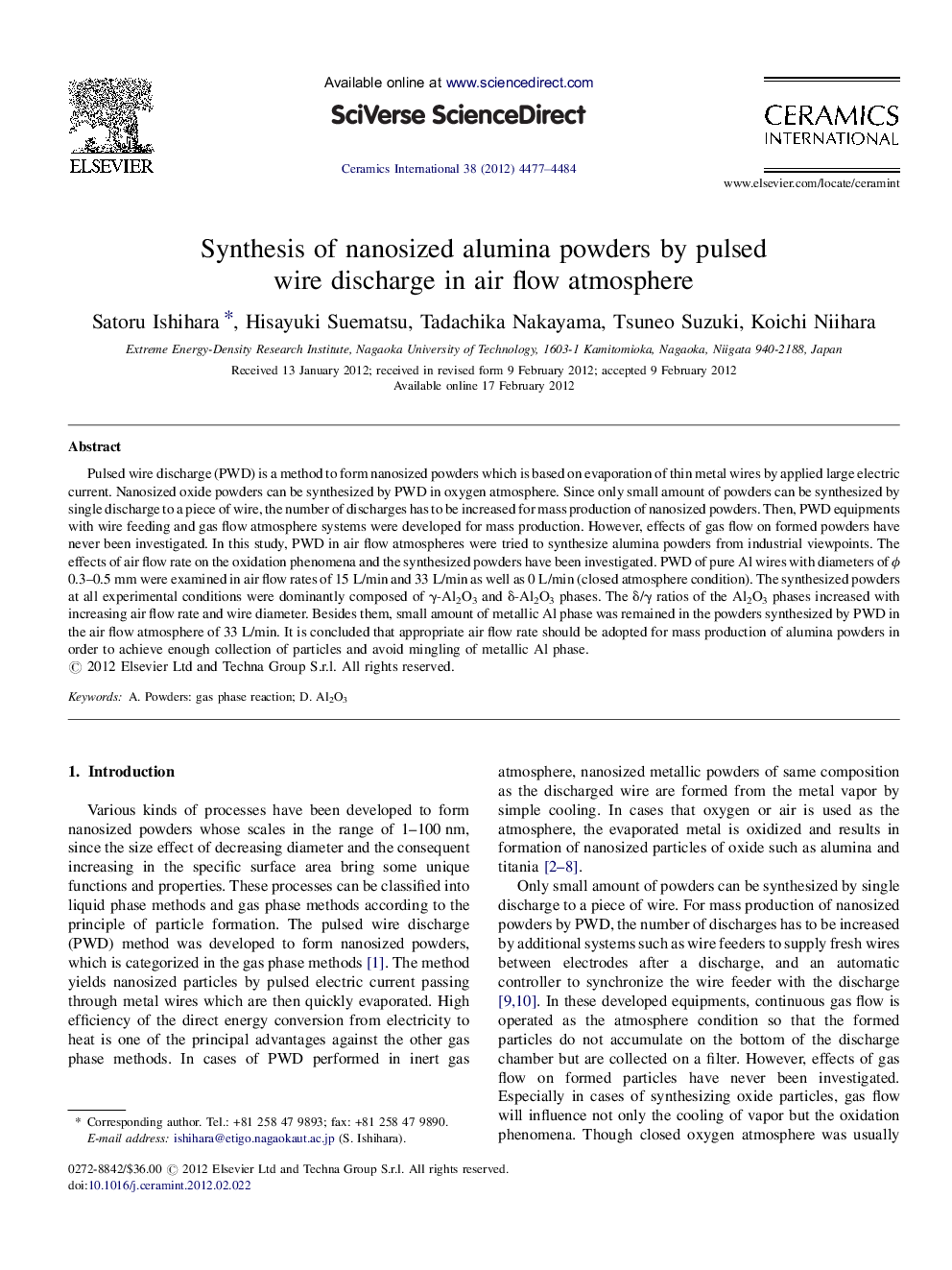| Article ID | Journal | Published Year | Pages | File Type |
|---|---|---|---|---|
| 1463707 | Ceramics International | 2012 | 8 Pages |
Pulsed wire discharge (PWD) is a method to form nanosized powders which is based on evaporation of thin metal wires by applied large electric current. Nanosized oxide powders can be synthesized by PWD in oxygen atmosphere. Since only small amount of powders can be synthesized by single discharge to a piece of wire, the number of discharges has to be increased for mass production of nanosized powders. Then, PWD equipments with wire feeding and gas flow atmosphere systems were developed for mass production. However, effects of gas flow on formed powders have never been investigated. In this study, PWD in air flow atmospheres were tried to synthesize alumina powders from industrial viewpoints. The effects of air flow rate on the oxidation phenomena and the synthesized powders have been investigated. PWD of pure Al wires with diameters of ϕ 0.3–0.5 mm were examined in air flow rates of 15 L/min and 33 L/min as well as 0 L/min (closed atmosphere condition). The synthesized powders at all experimental conditions were dominantly composed of γ-Al2O3 and δ-Al2O3 phases. The δ/γ ratios of the Al2O3 phases increased with increasing air flow rate and wire diameter. Besides them, small amount of metallic Al phase was remained in the powders synthesized by PWD in the air flow atmosphere of 33 L/min. It is concluded that appropriate air flow rate should be adopted for mass production of alumina powders in order to achieve enough collection of particles and avoid mingling of metallic Al phase.
